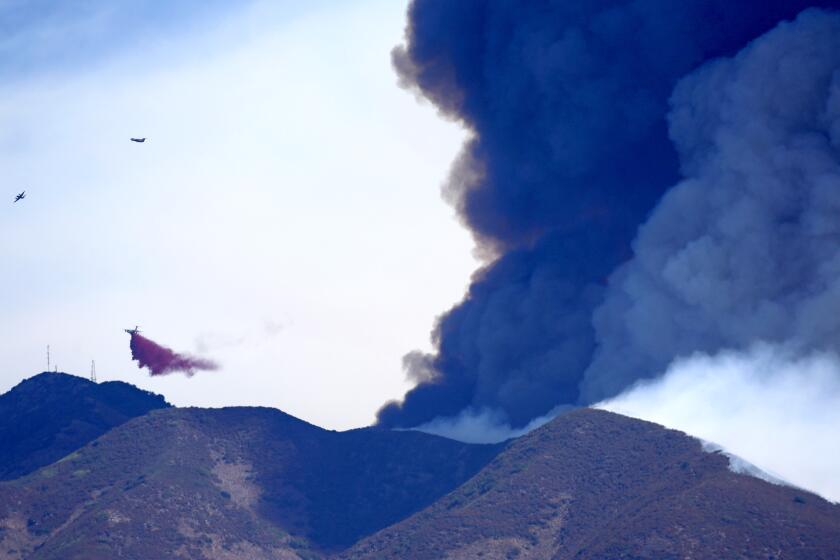Readers React: How earthquake waves move through rock
To the editor: The article states that the warning alerts sent over this new system travel at the speed of light over wires and airwaves but the earthquake energy travels slower at the speed of sound, meaning the warnings arrive sooner. (“Quake alerts’ success spurs effort to complete early-warning system,” Sept. 3)
A reader may assume that earthquakes traveling “at the speed of sound” means the speed of sound waves in air. In fact, earthquake waves travel much faster than sound in air.
The earthquake compressional or “P” wave travels at the speed of “sound” in rock. A typical P wave speed is 10,000 miles per hour. Sound travels through air at about 750 mph.
The P wave usually is not the damaging wave. It is the shear or “S” wave energy that travels slower, at about 6,000 mph. S waves arrive last, and these do the damage.
Bruce Luyendyk, Santa Barbara
The writer is a professor emeritus of geophysics at UC Santa Barbara.
Follow the Opinion section on Twitter @latimesopinion
More to Read
A cure for the common opinion
Get thought-provoking perspectives with our weekly newsletter.
You may occasionally receive promotional content from the Los Angeles Times.










